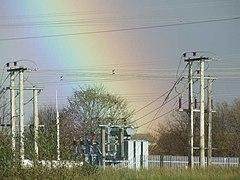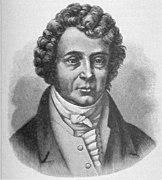Unit of Current - Definition, FAQs
What is the definition of electric current? What is the unit of current?
Electric currents are frequently discussed in our daily lives, both in the classroom and at home. The flow of electric charges in electric circuits is referred to as electric current in scientific language. Ions and electrons can sometimes carry charges at the same time.
It is necessary to measure the current passing through the circuit. It helps us to comprehend the circuit's performance and for the circuit to function as intended. The ammeter is used to measure electric current, and the unit of current is Ampere or amp. However, there are currently a variety of ways for determining the unit of current.

Also read -
What is the SI unit of electric current?
The SI unit of electric current is the Ampere, and it represents the flow of an electric charge passing through a surface at a rate of one coulomb per second. The unit is coulomb/sec (C/s) or amp because the charge is measured in coulombs, and the duration is measured in seconds. The formula for calculating electric current can be found below.
V/R = I
Where,
I = Current Electric
V = Voltage.
R = Resistance.
The Ampere is one of the SI basic units for electric current and is commonly used in electronic and electrical science as well as other fields of science. Induced Ampere is a term that can be defined based on the electromagnetic effect.
What is the unit of electric current?
The Ampere is a unit of current named for Andre-Marie Ampere, an early pioneer in electrical research. However, in practice, an Ampere is comparable to a coulomb per second , charge travelling across a circuit. The prescribed definition of an ampere is the constant current that, if continuous in two straight parallel wires of infinite length, of negligible circular cross-section, and put one metre apart in vacuum, would give a force of 2 × 10⁻⁷ newtons per metre of length between these conductors.

Also Read:
- NCERT solutions for Class 12 Physics Chapter 3 Current Electricity
- NCERT Exemplar Class 12 Physics Solutions Chapter 3 Current Electricity
- NCERT notes Class 12 Physics Chapter 3 Current Electricity
Conditions for the Ampere's Definition
The SI unit of electric current is Ampere and is one of the seven SI base units.
One Ampere is roughly comparable to 6.24*1018 elementary charges such as holes or electrons passing through a point or limit in one second. Current is defined by physicists as a flow of energy from substantially positive to considerably negative places; this is known as standard current or Franklin current.
Also check-
- NCERT Exemplar Class 11th Physics Solutions
- NCERT Exemplar Class 12th Physics Solutions
- NCERT Exemplar Solutions for All Subjects
NCERT Physics Notes:
Frequently Asked Questions (FAQs)
A charge is measured using the unit coulomb, and time is measured in seconds. Therefore, the unit of electric current is coulomb/second or C/s or AMPERE.
The symbol for current is I.
The Electric current is measured by an instrument called an ammeter.
The conventional direction of electric current flow is from positive terminal to negative terminal.